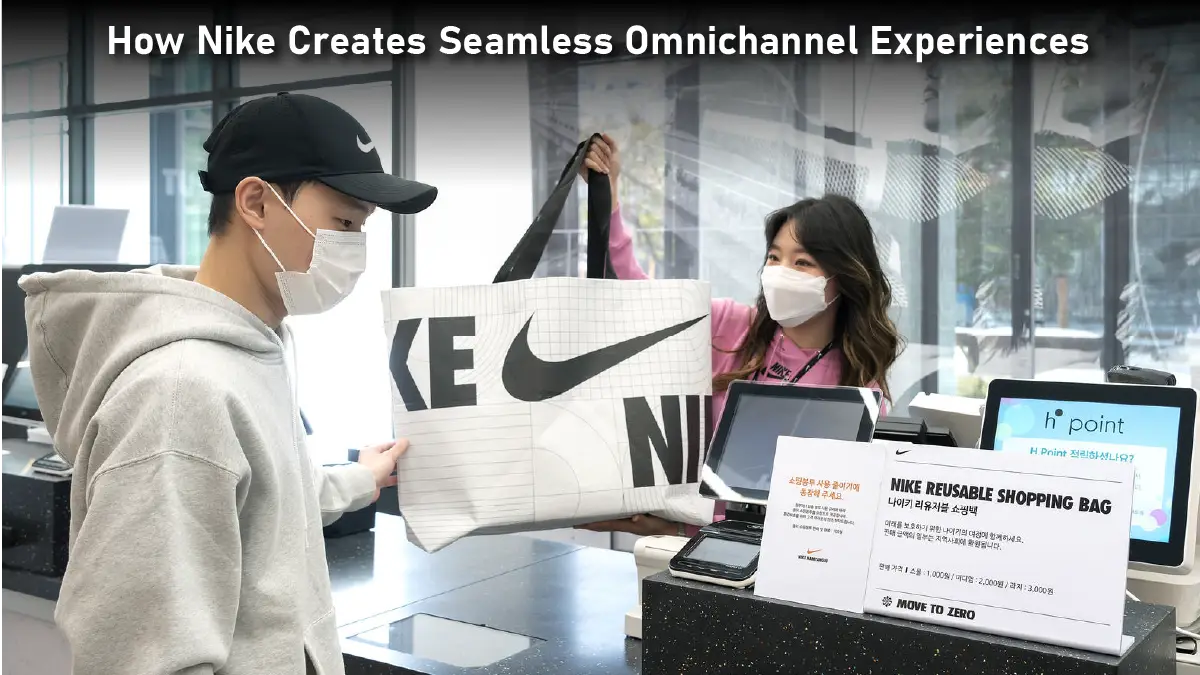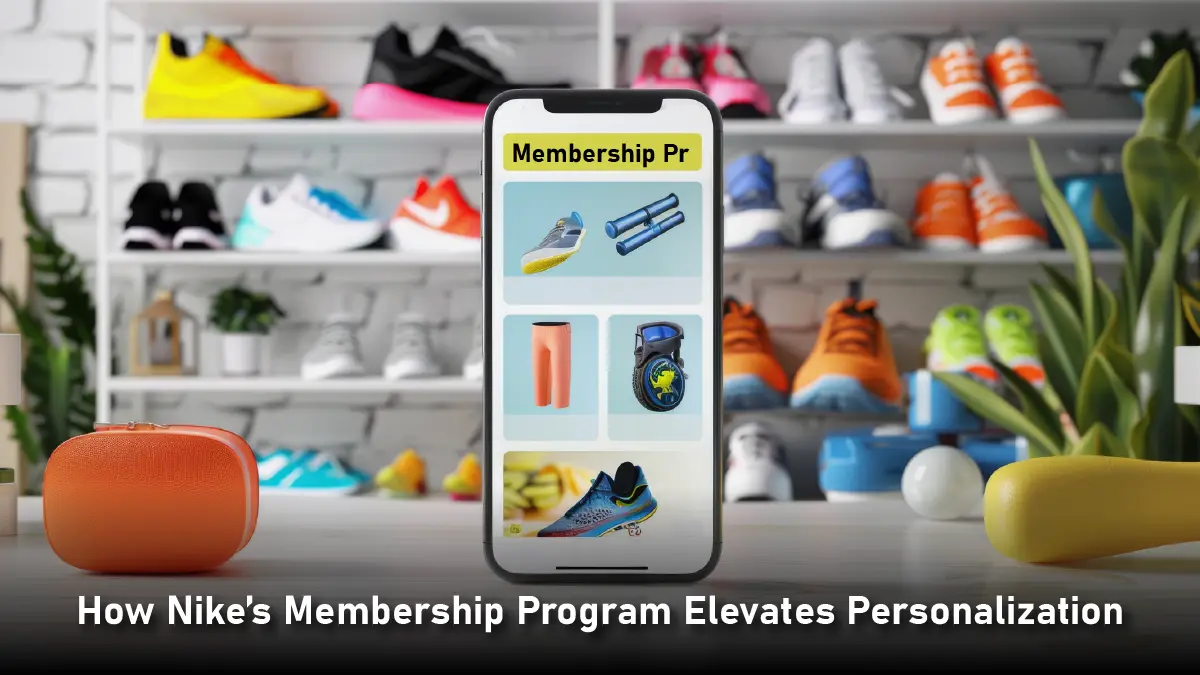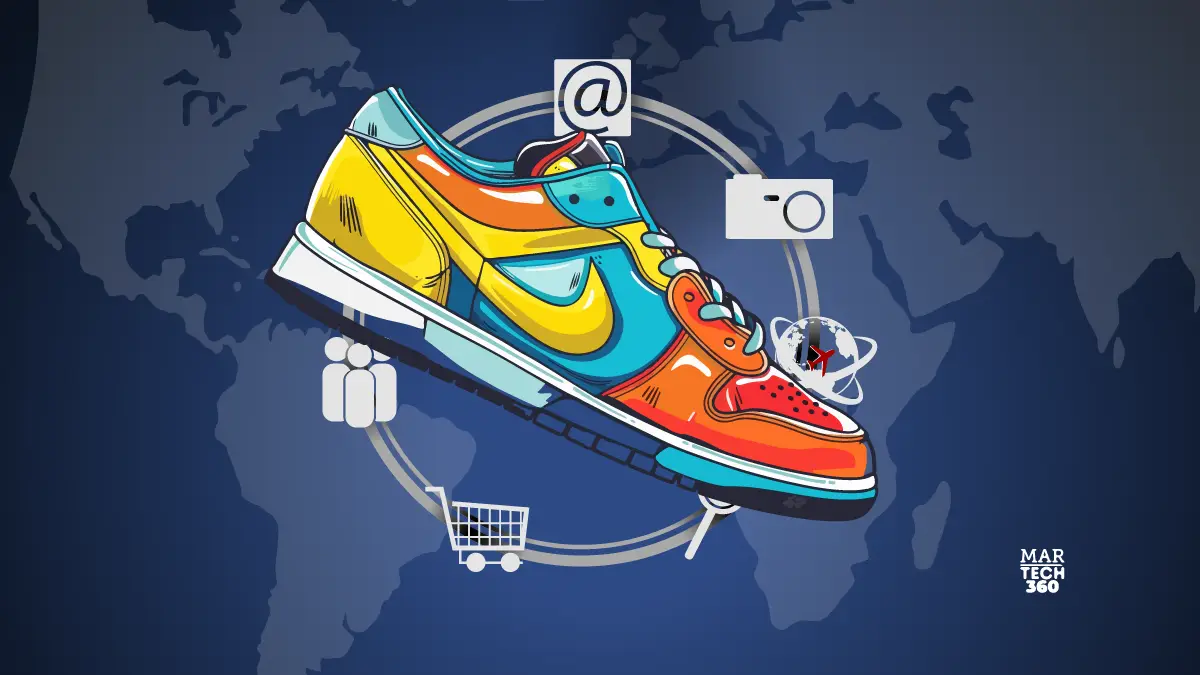Nike has grown from just a sportswear brand. Now, it’s a leader in tech. They use advanced marketing technology (Martech) to create personalized customer experiences. Nike uses cutting-edge marketing tech to craft unique customer experiences. They use data analytics, AI, and machine learning. This helps them personalize each interaction for every person. Also, their omnichannel strategies enhance this personalization.
The company leads in personalized marketing by blending digital tools with in-store experiences. Nike values its customers with its membership program. It also uses AI for product suggestions and offers personalized fitness tracking apps. This look at Nike’s Martech stack reveals how it drives personalized marketing. It shows how these tools boost customer engagement and build brand loyalty.
How Data Powers Nike’s Martech Stack
Nike’s Martech strategy centers on a strong data ecosystem. This system gathers customer insights and analyzes them. It then uses this info to create personalized experiences for its customers. The company collects a large volume of data from different places. This data comes from Nike’s online store and apps like Nike Run Club and Nike Training Club. Nike Run Club is one of the top fitness apps out there, with over 100 million users. Data also comes from other sources. These include social media, in-store sales, wearables, and partner marketplaces.
Nike uses this data to create detailed customer profiles. These profiles include more than just basic demographics. Nike goes beyond just age or gender to segment audiences. They use behavioral data to understand personal likes, shopping habits, and fitness goals. A customer who often buys running gear will get tailored recommendations for new running shoes. They will also receive personalized emails with training plans. Plus, they’ll get push notifications about upcoming marathons and exclusive running events.
Nike’s Customer Data Platform (CDP) collects all this data. It’s a vital system that connects customer interactions from both digital and physical points. The CDP makes sure every Nike customer gets personalized marketing messages. They get product suggestions and loyalty rewards based on what they like and how they act.
How AI and Machine Learning Drive Personalization
Nike uses AI and machine learning in its Martech stack. These tools analyze data to predict what customers want. This helps create highly personalized experiences. Nike uses AI in its strategy mainly through its recommendation engine. This engine suggests products to customers as they browse the Nike website or app. These AI recommendations consider your browsing history, past purchases, and the season. This helps show you the products that matter most.
Nike has taken its AI personalization to the next level. It has added generative AI to its marketing strategies. Nike uses this technology to make real-time content for emails, ads, and social media. This way, each message connects uniquely with the audience. The AI improves messaging. It looks at which content works best for each customer group.
Nike’s AI tool, Nike Fit, helps customers find the right shoe size with their smartphone camera. This technology scans the customer’s foot and checks its shape. Then, it suggests the best size using past purchase data and user feedback. This improves the customer experience and lowers return rates. Returns are a common challenge in online shoe sales.
Also Read: Why a Customer-Centric Strategy is the Key to Business Longevity
How Nike Creates Seamless Omnichannel Experiences

Nike’s shopping experience is seamless for customers, whether they are online or in-store. The mobile apps, such as SNKRS, Run Club, and Training Club, provide users with personalized content. Customers get early access to new products. They also enjoy tailored workout plans and loyalty rewards. These perks encourage them to come back more often. Nike builds direct links with customers through these apps. They provide tailored suggestions and insights based on what users like and how they act.
Nike is changing the shopping game with AR and VR. Now customers can virtually try on sneakers and check out products from every angle with 360-degree previews. They can even interact with stores through their phones – it’s all just a tap away. This tech helps Nike give customers a seamless shopping experience. It connects digital and physical retail.
In retail stores, Nike leverages digital tools to enhance the shopping experience. Interactive screens let customers view product catalogs, check stock, and customize their sneakers. Self-checkout kiosks make buying easier. Also, the Nike app works in-store. You can scan products for more info and pick up orders smoothly. Nike’s House of Innovation flagship stores go further with RFID technology. This tech spots customers as they walk in. It then offers shopping suggestions tailored to their Nike profile.
How Nike’s Membership Program Elevates Personalization

Nike’s Membership program is a standout example of its Martech-driven personalization strategy. This free loyalty program rewards customers with special perks. These rewards depend on how much they engage with the brand. Nike Members get early access to new sneaker releases. They also enjoy customized workout plans and personalized shopping experiences online and in-store.
Nike is using AI more in its membership program. Now, it provides fitness plans and product drops tailored to individual preferences. Frequent shoppers of basketball gear might get special invites. These include join events with NBA players, score early access to new sneakers, and enjoy discounts on related items. Personalization builds loyalty, changing casual shoppers into lifelong Nike fans.
The company is using blockchain technology to verify limited-edition sneakers. This helps stop counterfeit sales in the resale market. This makes sure Nike Members get verified, high-quality products. They also enjoy a more honest and clear shopping experience.
How Social Media and Influencer Marketing Enhance Personalization
Nike’s Martech stack goes beyond its own platforms. It includes smart social media and influencer marketing strategies. The brand uses AI tools to check social media trends. It finds the best influencers to work with. Nike partners with athletes, celebrities, and smaller influencers. This approach lets them engage with people on a personal level. To make their social media strategy more effective, Nike uses AI. It helps them tailor their content to different groups. During major sports events, Nike switches up their campaigns in real time. They rely on data to keep their messages fresh and relevant. Nike can use AI insights to find out what content connects with their audience. This helps the brand improve its marketing strategies.
The Future of Nike’s Martech Stack
Nike shows no signs of slowing down when it comes to Martech innovation. Nike is ready to take personalized marketing to new heights. Emerging technologies are on the rise. AR, VR, and real-time data analytics are driving this growth. The company is testing AR for virtual try-ons. It also uses AI for voice search. Plus, it employs blockchain to verify limited-edition sneakers.
Nike is focusing more on sustainable marketing technology. They use AI to track and promote eco-friendly products. Nike’s data-driven efforts help customers make smarter buying choices. This focus is based on their environmental impact. It shows Nike’s dedication to sustainable innovation.
Conclusion
Nike has combined technology with personalized marketing. Nike has changed how customers connect with retail. They use data analytics, AI personalization, and omnichannel strategies. This ecosystem ensures every customer feels valued and understood. The company will keep innovating. Personalization will stay a key part of its marketing strategy. This focus will boost brand loyalty and help the business grow in the future.


Comments are closed.